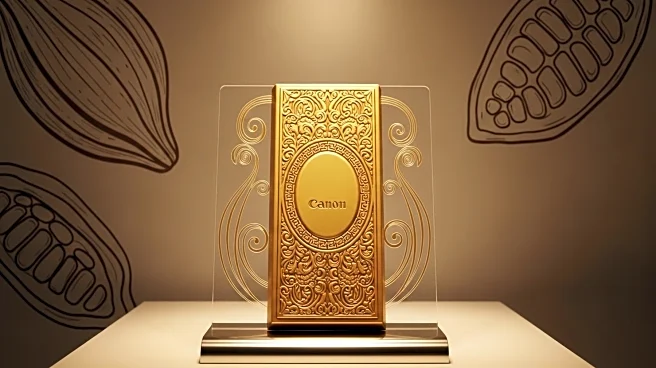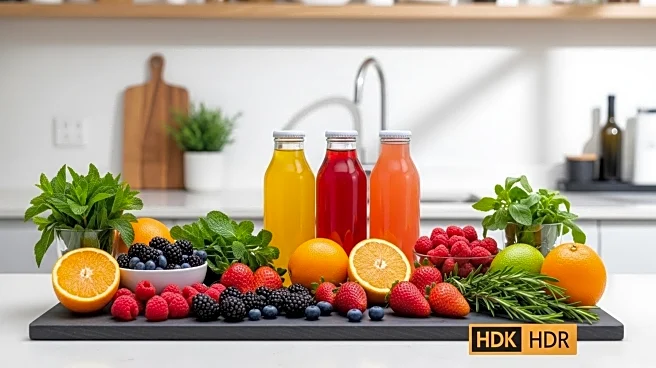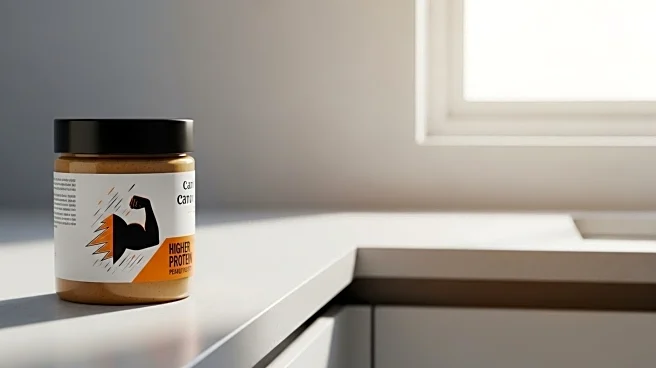What's Happening?
The global chocolate market, currently valued at $129 billion, is projected to grow to $180 billion by 2035, according to Future Market Insights. Milk chocolate leads the market with a 51.2% share due to its broad consumer appeal. The market is experiencing significant expansion driven by increasing global consumption, a preference for premium and functional products, and growth in organized retail and e-commerce channels. Premiumization trends are shaping the market, with manufacturers focusing on high-quality ingredients, unique flavors, and healthier formulations. Urbanization, rising disposable incomes, and Western confectionery culture influence consumption growth across diverse demographics. Packaging innovations and strategic retail partnerships further reinforce the market's adaptability to shifting consumer behaviors.
Why It's Important?
The growth of the chocolate market has significant implications for various stakeholders, including manufacturers, retailers, and consumers. Manufacturers stand to benefit from increased demand for premium and functional products, which can lead to higher profit margins. Retailers can capitalize on the expanding e-commerce platforms and modern retail formats to reach a broader audience and drive sales. Consumers are likely to benefit from a wider variety of high-quality and health-oriented chocolate products. The focus on sustainability, including ethically sourced cocoa and eco-friendly packaging, aligns with growing consumer demand for responsible consumption. This shift towards premium and functional products reflects broader trends in the food and beverage industry, emphasizing health, wellness, and ethical considerations.
What's Next?
The future of the chocolate market is expected to be shaped by continued interest in premium and functional products. Dark chocolate with high cocoa content, sugar-free variants, and chocolates fortified with vitamins, minerals, or probiotics are increasingly favored by health-conscious consumers. Seasonal and festive gifting is amplifying demand for luxury packaging and artisan chocolates. Sustainability trends, including ethically sourced cocoa and eco-friendly packaging, are expected to influence purchasing decisions more and more. The integration of traceability systems and digital monitoring in supply chains is helping to ensure authenticity and eliminate adulteration. Efficient logistics, cold chain management, and improved warehousing practices are enabling timely delivery of raw materials and finished products, reducing waste and cost pressures.
Beyond the Headlines
The chocolate market's evolution reflects broader societal shifts towards health-conscious and sustainable consumption. The emphasis on premium and functional products indicates a growing consumer preference for quality and wellness. The integration of traceability systems and digital monitoring in supply chains highlights the importance of transparency and authenticity in food production. The focus on eco-friendly packaging aligns with global sustainability goals, addressing environmental concerns associated with traditional packaging materials. As the market continues to adapt to changing consumer preferences, it may serve as a model for other sectors within the food and beverage industry, demonstrating the potential for innovation and growth through alignment with modern values and lifestyles.










